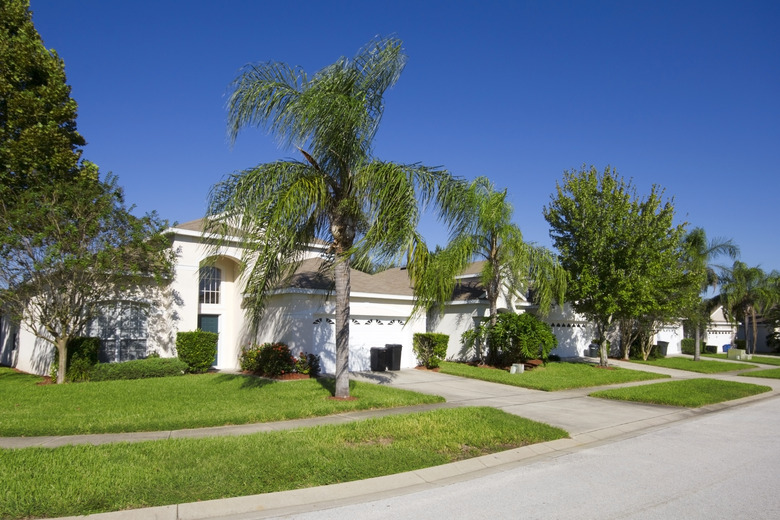The Best Grass Seed For Florida
We may receive a commission on purchases made from links.
Growing a verdant, lush lawn in Florida's subtropical climate requires choosing a grass seed that thrives in hot temperatures, humidity, and salty soil. There are a myriad of grass varieties that can handle the state's intense weather.
Choosing a Grass Type
Choosing a Grass Type
Choosing a variety of grass requires knowing what type of climate it's adapted for — a warm-season grass or a cool-season grass. Warm-season grasses are well suited to hotter climates, while cool-season grasses do better with milder and colder temperatures.
Florida's climate varies, depending on whether you're in the southern or northern part of the state, influencing which grass seed is the best to grow. Cool-season grasses are appropriate in the northern, more mountainous part of the state and include tall fescue and perennial ryegrass. For the hotter, more humid southern areas, choose warm-season grasses, in particular bermudagrass, centipedegrass, St. Augustine, and zoysiagrass. Bermudagrass is among the easiest grasses to grow from seed in Florida.
Warm-Season Grass Varieties
Warm-Season Grass Varieties
Bermudagrass (Cynodon spp.) can tolerate lots of heat and humidity and is an excellent grass seed for Florida's sandy soil. Bermudagrass can handle somewhat salty soil and does well during periods of drought. If planted in an area where the weather can get cold, this grass often goes dormant during colder periods but will regrow again once the hot weather returns. Centipedegrass (Eremochloa ophiuroides) is low-maintenance and can grow in sandy soils and soils that lack a lot of nutrients.
St. Augustine grass (Stenotaphrum secundatum) is a Florida favorite because it can survive with little water and maintain its vibrant color, but it's also an ideal grass seed for shady areas. If you anticipate heavy foot traffic, however, this grass is not your best choice; instead, consider zoysiagrass. Zoysiagrass (Zoysia spp.) grows well from seed and produces a thick, luscious turf. It does best in hot, humid weather but can also manage growing in some shade. This grass can also handle a lot of foot traffic and still look good.
Cool-Season Grass Varieties
Cool-Season Grass Varieties
Perennial ryegrass (Lolium perenne) grows quickly and densely, resulting in a full, lush lawn. This grass needs plenty of water to maintain its vibrant, dark green hue.
Tall fescue grass (Festuca arundinacea) can handle hot weather and humidity and also manages well during times of drought because of its deep root system. It grows in bunches rather than by underground rhizomes or stolons, so it can take longer to fill in an area than some other grasses.
When to Plant
When to Plant
Cool-season grasses do best when planted in the fall when the temperatures are moderate and cooler at night, although you can also plant them in the spring if you missed the fall window. Warm-season grasses are best planted in the spring or early summer, usually between April to July. This gives the seeds time to germinate and get established during the warm and hot weather before cooler weather sets in.
